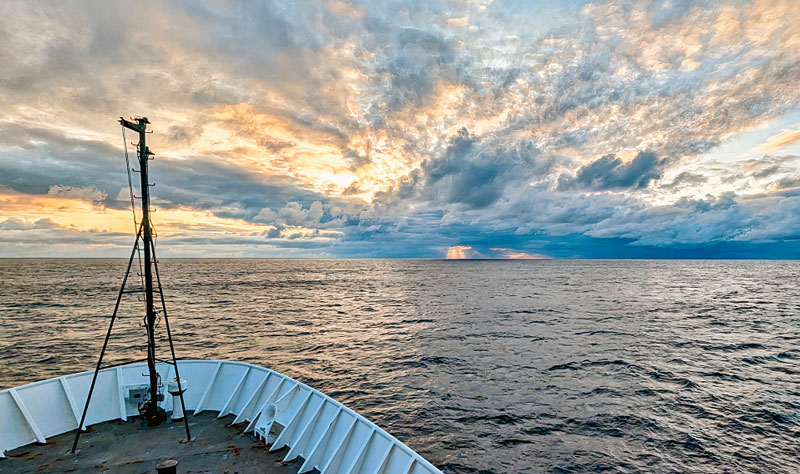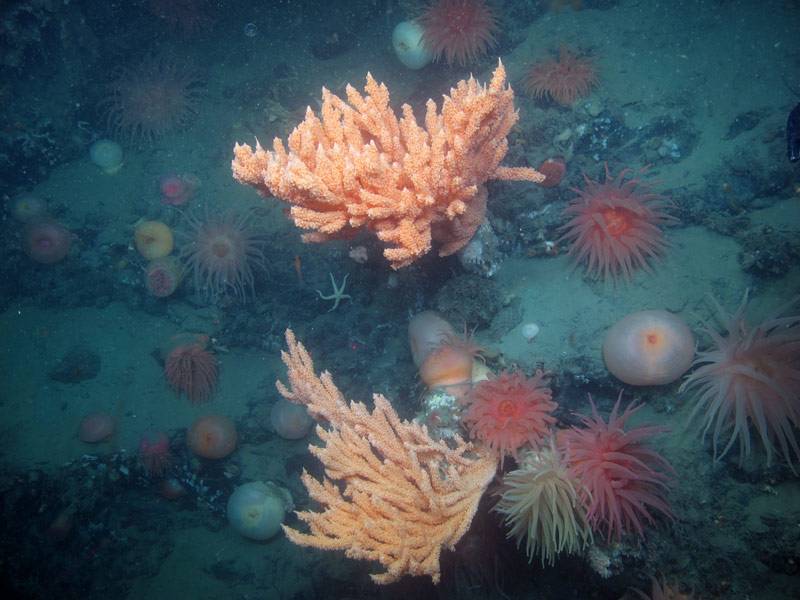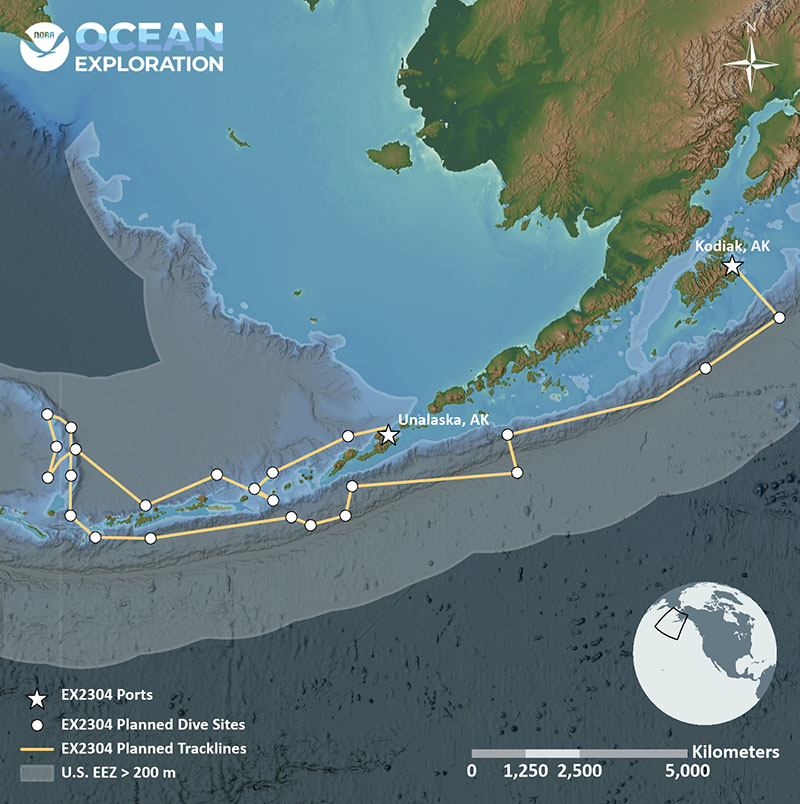Seascape Alaska 3: Aleutians Remotely Operated Vehicle Exploration and Mapping
(EX2304)
Expedition Overview
From July 14 - July 25, NOAA Ocean Exploration and partners will conduct the third in a series of Seascape Alaska expeditions on NOAA Ship Okeanos Explorer. The major goals of the expedition include mapping, exploring, and characterizing ecologically and economically important deepwater habitats and subduction zone environments in unexplored regions off the Aleutian Islands of Alaska.
Despite contributing the largest area to the U.S. Exclusive Economic Zone (EEZ) and playing a critical role in our nation’s economy and national security, deep waters around Alaska remain one of the least explored areas in the United States. Approximately 34% of the seafloor around Alaska has been mapped to modern standards and just a fraction of that has been visibly surveyed. Yet we know that Alaskan waters hold vast resources and wonders – from diverse coral and sponge communities to commercially important invertebrates and fish, mud volcanoes, gas seeps escaping from the seafloor, and more. Increasing our understanding of where these features and fauna are found; how they operate; and how they are connected to each other, the greater Earth environment, and to us is critical to sustainably managing and protecting these areas.
During the Seascape Alaska 3 expedition, the team will work to fill some of the gaps in our understanding of the region by conducting focused mapping and remotely operated vehicle (ROV) operations, with a focus on waters deeper than 200 meters (656 feet) off the Aleutian Islands.
Mapping operations will serve as the basis for planning and executing ROV dives during the expedition. Given the sparsity of mapping data in the region, in many instances, the team will follow a “map and dive” approach, collecting mapping data the night before a dive to guide the path of the ROV on a dive taking place the following morning. These mapping data will also inform future exploration efforts, be used to establish a baseline assessment of the ocean environment, increase understanding of marine life and habitats to inform management decisions, and increase public awareness of ocean issues.
Over the course of the expedition, we will conduct ROV dives at depths ranging from approximately 500 to 5,800 meters (1,640 to 19,030 feet) to explore deep-sea coral and sponge habitats, gas seeps and fracture zones (and related geohazards), and the water column. Thanks to telepresence technology, anyone with an internet connection is invited to watch and listen as members of the science community actively engage and guide each dive.
All things permitting, dives will be streamed live daily, July 15 to July 24, from approximately 8 a.m. to 5 p.m. AKDT / 12 p.m. to 9 p.m. EDT. Note that dates and times are subject to change.
All of the 2023 Seascape Alaska expeditions are being planned and conducted from a place of respect for and recognition of the Indigenous peoples of Alaska and their connection to and knowledge of the ocean, fish, birds, and other wildlife that sustain their livelihood, traditions, and communities. By communicating and engaging with tribal communities about the work being conducted, we hope to learn more about Alaska Native traditions and cultures and gain insights into how NOAA can better partner with these communities, incorporate indigenous knowledge, and ensure continued practical use and conservation of the state’s marine resources.



Originally published June 22, 2023